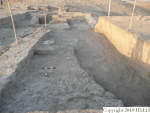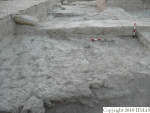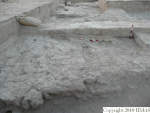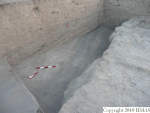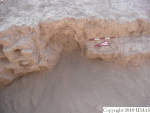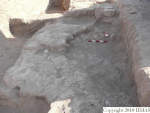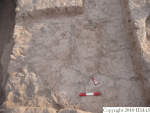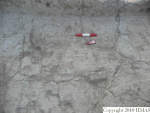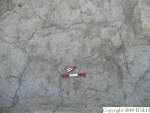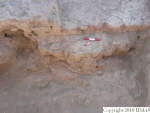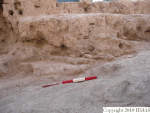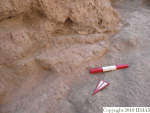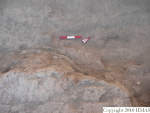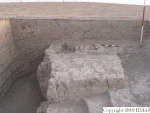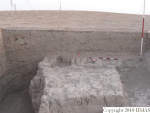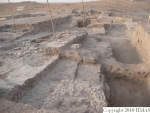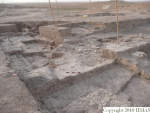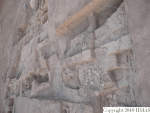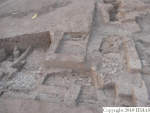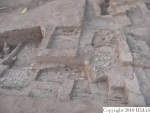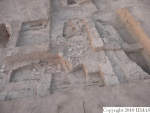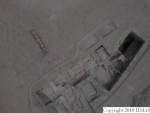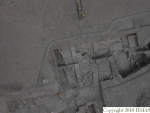| Roster |
Date |
Author |
Record |
| Daily notes about recovery of elements |
2008-08-10 |
lR |
This feature along with f82 continues to perplex us as it is a large amorphous bricky mass with faint suggestions of brick lines that never materialize into complete bricks. Today after meeting with fAB, it was decided to remove 10 cm of it starting from the south. This material was very difficult to remove coming out in large bricky chunks that fail to break with your hands, perhaps secondarily fired from whatever created ash f22 and f24. At the end of the day no resolution was reach for underneath the same compact bricky mass is present. To the south, f82 was also removed 10 cm finding interesting veins of reddish to orange clay. Given all the ash, the artifacts we are finding which include small fragments of flint, lithic blades and samples of minerals, perhaps this area was associated with some type of craft production. Several holes are present on the western side of f52, interpreted as animal holes although it's strange to have so many on the surface and may be linked to a specific function. The largest hole, fill f104 has one corner with brick faces suggestive of a possible door but the other side is rounded, appearing more like an animal hole than a doorway. The fill was partially excavated to see if more brick faces surfaced, these faces were found only in the southern end. [Input: S810LR2.j] |
| 2008-08-14 |
lR |
A pavement, f117, was found under f52 and f82 (seen in the eastern border) forming a thick highly compacted floor surface with pottery sherds underneath serving as leveling material for the floor. f117 does not extend north under f64, appearing localized under f52 and f82. This would suggest that f64 is earlier in construction. [Input: S816LR.j] |
| 2008-08-17 |
lR |
In k12, 5 cm was removed from f82, noticing several brick lines but not enough to define a wall. We then began to excavate the vertical section of f82, to see if good brick faces surfaced and to investigate if f117 curls up towards the bricks suggesting an outside floor surface or if the bricky mass sits on the floor. After following several good brick faces we resolved that f117 goes under the presumed bricks, finding a series of pavements at different elevations. This suggests that f52 and f82 were reused over multiple periods of time, laying down new pavements. It also suggests that the bricky mass is not technically a wall due to these multiple pavements underneath but that bricky material was periodically placed over the pavement during use. All 3 pavements are similar in type, color, and hardness labeled f123 and f124. [Input: S818lR.j] |
| Strategy (projected or implemented) |
2008-08-06 |
lR |
To best define f52, the area to the south, f82 will be excavated coming towards f52. [Input: S806LR.j] |
